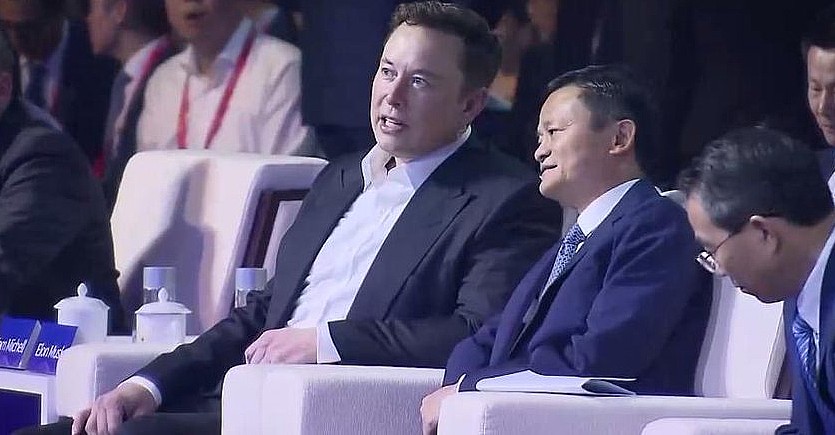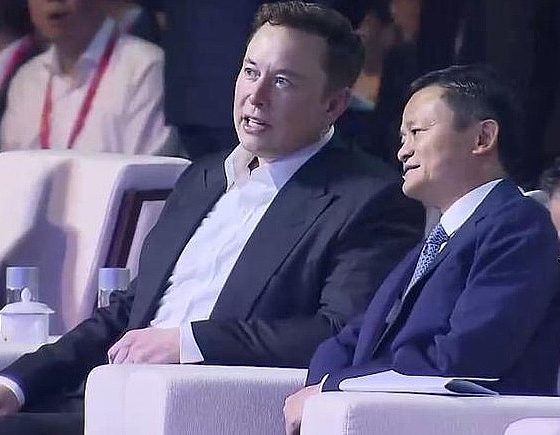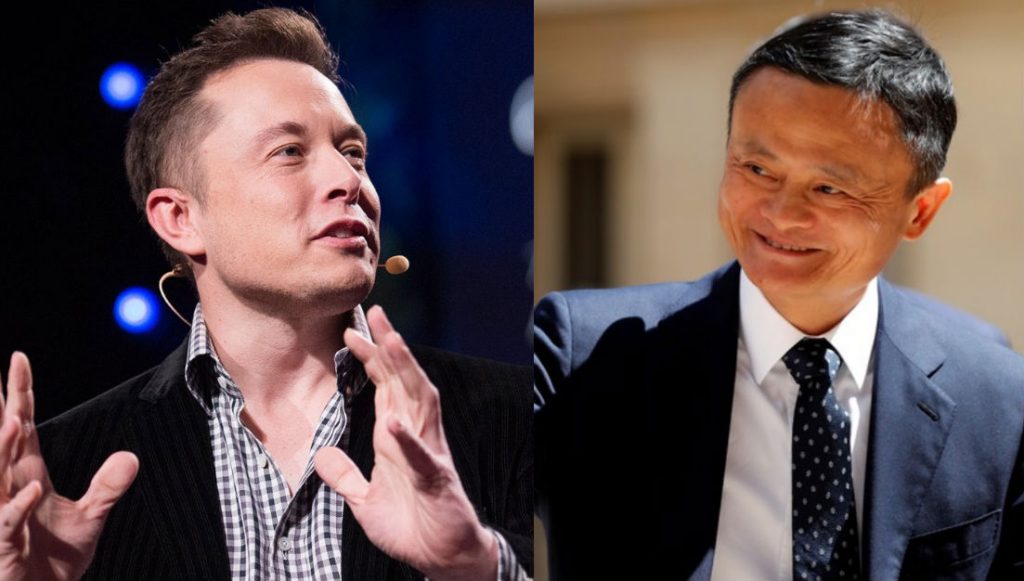

News
Elon Musk and Jack Ma discuss AI’s risks, Mars, and how humans can secure the future
Tesla and SpaceX CEO Elon Musk and Alibaba founder and Chairman Jack Ma kicked off the 2019 World Artificial Intelligence Conference in Shanghai, China, with an informal debate about AI and its implications to humanity. Throughout their conversation, Musk and Ma touched on several topics, from jobs, the need for educational reform, moving to Mars, and how humans’ way of life can improve in the future.
Opposing Views
The two billionaires have vastly differing points of view concerning artificial intelligence. While Musk is cautious about AI considering the dangers it may pose to humanity, Ma is far more optimistic. “I don’t think AI is a threat,” Ma said, responding to the Tesla CEO’s introductory points. Explaining further, the Alibaba founder noted that people are “street smart,” and thus, humanity will be fine even when AI evolves. Musk, for his part, doubled down on his point, arguing that AI’s rate of improvement is notable, and there will come a time when computers will outpace humans’ natural ability to understand it.
Making humans multi-planetary
Musk noted that humans have an opportunity today because this is the first time in history that it’s “possible to extend life beyond Earth.” He added that the window for this could either be open for a long or short time. Thus, it is in humanity’s best interest to secure its multi-planetary opportunities as quickly as possible.
Ma, for his part, argued that he has no interest in multi-planetary initiatives. “I’m not a fan of going to Mars,” he noted. Instead, Ma stated that it’s more pertinent for humans to try and preserve Earth. The Alibaba chairman nevertheless stated that the world needs innovators like Elon Musk, in as much as it needs people who are willing to do what needs to be done to save the planet. “We need heroes like you (who want to go to Mars), but we need heroes like us (who will fix Earth),” Ma said.
Musk explained that preserving Earth is a notable part of Tesla’s mission, from transitioning the transportation sector towards sustainability to fostering energy independence through solar power and batteries. Responding to Ma’s statements about using resources to focus on solving Earth’s problems, Musk noted that it will only take a fraction of the world’s GDP to make humans multi-planetary, comparable or even less than what people spend on something like makeup annually. “Spending resources on making life multi-planetary would be enough with just 1% of the earth’s GDP,” Musk noted.
AI’s threat to jobs
“Why do we need that many jobs anyway?” Ma said, explaining that humans have been fearing that tech will take jobs away for over a hundred years, and yet, jobs have increased. Ma believes that with AI’s help, humans can eventually reach a point where the average workweek is only 3 days per week, and the average workday is only 4 hours a day. This, according to Ma, opens the opportunity for humans to enjoy life more, and live even longer. “We need to be ready to enter the era where everyone will get to live 120 years,” he said.
Musk, for his part, stated that the advent of AI will likely make most jobs pointless. Considering AI’s evolution, Musk noted that the time will come when computers could eventually make their own software. With this in mind, it would be best for people to embrace areas such as engineering and fields of study that deal with human relations, as these will still be pertinent even in the artificial intelligence age. The Tesla CEO added that this is the reason behind Neuralink and its brain-machine interface, as it will prevent humans from being left behind.
The need for education reform
The Alibaba founder admitted that he is worried about the current educational system, which is still largely designed for the industrial period. Ma argues that today, there is a need to foster more creative and constructive education, which would allow humans to live a happier life. “I want to spend more time training kids on painting, singing, dancing, these creative things that make people live like humans,” he said. Ma added that people have heart, and that is where wisdom comes from. With this in mind, it is best for education to focus on training this aspect of the human being.
The Tesla CEO agreed that creative education is needed, particularly as today’s school system is “low bandwidth and extremely slow.” Musk noted that solutions such as Neuralink’s neural lace could be a difference-maker in this sense, as it would allow people to upload skills and learn them quickly, in a manner that is not too far from the concepts depicted in the sci-fi franchise The Matrix.

The dangers of AI
While the two disruptors agreed that there is a need for educational reform, Musk and Ma disagreed most about the potential risks of AI. Ma argued that compared to humans, computers are just a toy, adding that the best resource in the world is the human brain. “It’s impossible that humans could be controlled by machines. They’re machines that are invented by humans,” Ma said.
Musk noted that he very much disagrees with Ma’s stance. Arguing his point, the Tesla CEO stated that humans are capable of creating things that are superior to people. Humans are not the last step in evolution, Musk said, and people must be wary of thinking that they are smarter than they really are. “The most important mistake smart people make is that they think they’re smart. Computers are already smarter than people. We just keep moving the goalposts,” he stated.
Responding to Musk’s argument, Ma noted that the metrics humans use to benchmark themselves against AI (such as world champions in Chess playing against artificial intelligence) do not make sense, as games like Go are designed for human minds. “Why should humans play against computers? It’s stupid to compete with computers,” Ma quipped, adding that while computers can be clever, humans are smarter and wiser.
The future of humanity
Musk believes that one of the world’s greatest threats lie in its declining birthrate. “The world’s biggest issue in 20 years is population collapse,” he said, adding that this could be a big issue considering that humans generally have a “20-year boot sequence.” Ma agreed, stating that even China’s population, which currently stands at 1.4 billion people, sounds a lot today, but if one factors in the country’s declining birthrate, the country will see a completely different landscape in 20 years.
Musk added that more humans are definitely needed, especially with the start of multi-planetary initiatives. “Mars needs people,” he lightly said.
Ma ultimately believes that pursuing AI is wise to make people’s lives better. The Alibaba founded added that artificial intelligence can always do a better job when logic is involved, but when logic is not involved, humans will always be better. To thrive in the future, Ma stated that humans need not just IQ, but emotional intelligence, and (love) intelligence as well. Musk nodded, stating “I agree with him. Love is the answer.”
Watch Elon Musk and Jack Ma’s informal AI debate in the video below.

News
Tesla FSD fleet is nearing 7 billion total miles, including 2.5 billion city miles
As can be seen on Tesla’s official FSD webpage, vehicles equipped with the system have now navigated over 6.99 billion miles.

Tesla’s Full Self-Driving (Supervised) fleet is closing in on almost 7 billion total miles driven, as per data posted by the company on its official FSD webpage.
These figures hint at the massive scale of data fueling Tesla’s rapid FSD improvements, which have been quite notable as of late.
FSD mileage milestones
As can be seen on Tesla’s official FSD webpage, vehicles equipped with the system have now navigated over 6.99 billion miles. Tesla owner and avid FSD tester Whole Mars Catalog also shared a screenshot indicating that from the nearly 7 billion miles traveled by the FSD fleet, more than 2.5 billion miles were driven inside cities.
City miles are particularly valuable for complex urban scenarios like unprotected turns, pedestrian interactions, and traffic lights. This is also the difference-maker for FSD, as only complex solutions, such as Waymo’s self-driving taxis, operate similarly on inner-city streets. And even then, incidents such as the San Francisco blackouts have proven challenging for sensor-rich vehicles like Waymos.
Tesla’s data edge
Tesla has a number of advantages in the autonomous vehicle sector, one of which is the size of its fleet and the number of vehicles training FSD on real-world roads. Tesla’s nearly 7 billion FSD miles then allow the company to roll out updates that make its vehicles behave like they are being driven by experienced drivers, even if they are operating on their own.
So notable are Tesla’s improvements to FSD that NVIDIA Director of Robotics Jim Fan, after experiencing FSD v14, noted that the system is the first AI that passes what he described as a “Physical Turing Test.”
“Despite knowing exactly how robot learning works, I still find it magical watching the steering wheel turn by itself. First it feels surreal, next it becomes routine. Then, like the smartphone, taking it away actively hurts. This is how humanity gets rewired and glued to god-like technologies,” Fan wrote in a post on X.
News
Tesla starts showing how FSD will change lives in Europe
Local officials tested the system on narrow country roads and were impressed by FSD’s smooth, human-like driving, with some calling the service a game-changer for everyday life in areas that are far from urban centers.

Tesla has launched Europe’s first public shuttle service using Full Self-Driving (Supervised) in the rural Eifelkreis Bitburg-Prüm region of Germany, demonstrating how the technology can restore independence and mobility for people who struggle with limited transport options.
Local officials tested the system on narrow country roads and were impressed by FSD’s smooth, human-like driving, with some calling the service a game-changer for everyday life in areas that are far from urban centers.
Officials see real impact on rural residents
Arzfeld Mayor Johannes Kuhl and District Administrator Andreas Kruppert personally tested the Tesla shuttle service. This allowed them to see just how well FSD navigated winding lanes and rural roads confidently. Kruppert said, “Autonomous driving sounds like science fiction to many, but we simply see here that it works totally well in rural regions too.” Kuhl, for his part, also noted that FSD “feels like a very experienced driver.”
The pilot complements the area’s “Citizen Bus” program, which provides on-demand rides for elderly residents who can no longer drive themselves. Tesla Europe shared a video of a demonstration of the service, highlighting how FSD gives people their freedom back, even in places where public transport is not as prevalent.
What the Ministry for Economic Affairs and Transport says
Rhineland-Palatinate’s Minister Daniela Schmitt supported the project, praising the collaboration that made this “first of its kind in Europe” possible. As per the ministry, the rural rollout for the service shows FSD’s potential beyond major cities, and it delivers tangible benefits like grocery runs, doctor visits, and social connections for isolated residents.
“Reliable and flexible mobility is especially vital in rural areas. With the launch of a shuttle service using self-driving vehicles (FSD supervised) by Tesla in the Eifelkreis Bitburg-Prüm, an innovative pilot project is now getting underway that complements local community bus services. It is the first project of its kind in Europe.
“The result is a real gain for rural mobility: greater accessibility, more flexibility and tangible benefits for everyday life. A strong signal for innovation, cooperation and future-oriented mobility beyond urban centers,” the ministry wrote in a LinkedIn post.
News
Tesla China quietly posts Robotaxi-related job listing
Tesla China is currently seeking a Low Voltage Electrical Engineer to work on circuit board design for the company’s autonomous vehicles.

Tesla has posted a new job listing in Shanghai explicitly tied to its Robotaxi program, fueling speculation that the company is preparing to launch its dedicated autonomous ride-hailing service in China.
As noted in the listing, Tesla China is currently seeking a Low Voltage Electrical Engineer to work on circuit board design for the company’s autonomous vehicles.
Robotaxi-specific role
The listing, which was shared on social media platform X by industry watcher @tslaming, suggested that Tesla China is looking to fill the role urgently. The job listing itself specifically mentions that the person hired for the role will be working on the Low Voltage Hardware team, which would design the circuit boards that would serve as the nervous system of the Robotaxi.
Key tasks for the role, as indicated in the job listing, include collaboration with PCB layout, firmware, mechanical, program management, and validation teams, among other responsibilities. The role is based in Shanghai.
China Robotaxi launch
China represents a massive potential market for robotaxis, with its dense urban centers and supportive policies in select cities. Tesla has limited permission to roll out FSD in the country, though despite this, its vehicles have been hailed as among the best in the market when it comes to autonomous features. So far, at least, it appears that China supports Tesla’s FSD and Robotaxi rollout.
This was hinted at in November, when Tesla brought the Cybercab to the 8th China International Import Expo (CIIE) in Shanghai, marking the first time that the autonomous two-seater was brought to the Asia-Pacific region. The vehicle, despite not having a release date in China, received a significant amount of interest among the event’s attendees.








